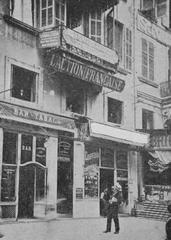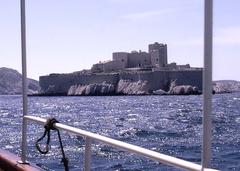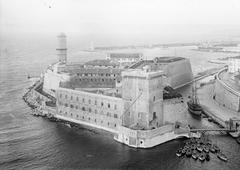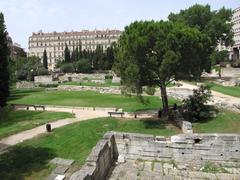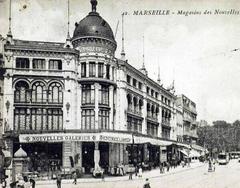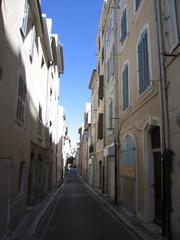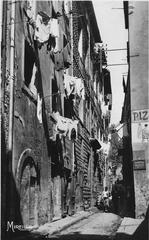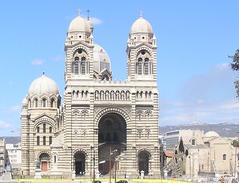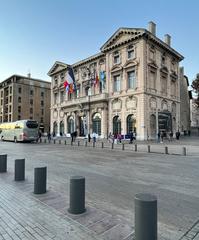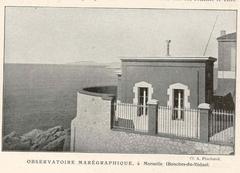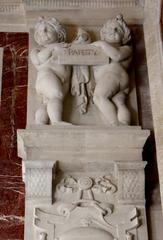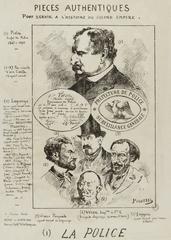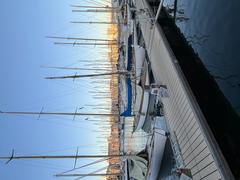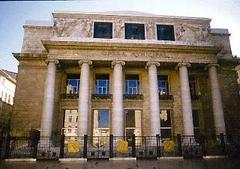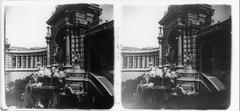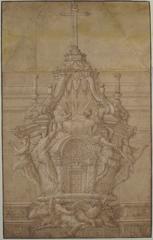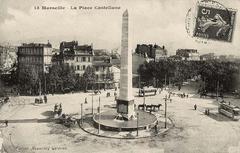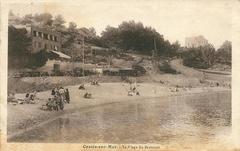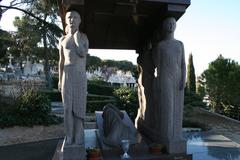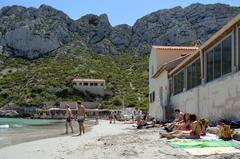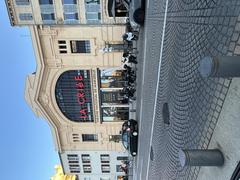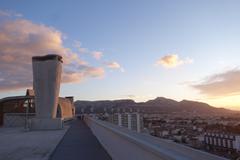Rue Paradis Marseille: Visiting Hours, Tickets, and Historical Sites Guide
Date: 04/07/2025
Introduction
Rue Paradis is one of Marseille’s most iconic and prestigious streets, stretching nearly 2.9 kilometers through the heart of the city. Famed for its rich history, elegant Haussmannian architecture, luxury shopping, and vibrant café culture, Rue Paradis offers a unique lens into Marseille’s evolution from its medieval roots to its present-day cosmopolitan flair. Whether you are a history buff, architecture enthusiast, or a traveler seeking authentic urban experiences, this guide provides all the essential information on Rue Paradis, including historical background, visiting hours, ticketing, accessibility, nearby attractions, and practical visitor tips.
Historical Overview
Origins and Early History
Rue Paradis traces its origins to the early 11th century, its name derived from the priory of Saint-Pierre de Paradis and its associated cemetery. By 1044, the neighborhood was already recognized as Paradis, owing to the priory’s influence (Wikipedia). In 1213, Hugues Fer established the church of Sainte-Marie du Paradis, further cementing the area’s religious significance. Both the priory and church, however, were demolished in 1524 to fortify Marseille against military threats, a pivotal moment that ended the street’s medieval religious chapter but did not erase its name or importance.
Urban Evolution and Belle Époque Transformation
Following the destruction of its religious landmarks, Rue Paradis underwent several phases of urban development. During the reign of Louis XIV in 1666, the street became a central axis in Marseille’s grand city expansion, linking the historic core with emerging neighborhoods (Wikipedia). The 19th century witnessed Rue Paradis’s transformation into a hub of affluence and urban grandeur, characterized by the construction of grand Haussmannian façades and stately apartment buildings. This architectural heritage, still visible today, is a testament to Marseille’s economic and social ascent during the Belle Époque (France Rent).
Architectural and Social Significance
Rue Paradis is renowned for its striking Haussmannian architecture: elegant stone façades, wrought-iron balconies, ornate cornices, and imposing wooden doors line the street from Place du Général-de-Gaulle near La Canebière to Avenue du Prado. These buildings, once homes and offices of the city’s elite, now host luxury boutiques, banks, cafés, and professional services. The street’s refined ambiance, shaded by mature plane trees and enhanced by decorative street lamps, invites leisurely strolls and window shopping, making it one of Marseille’s most desirable addresses (Guide Méditerranée).
Visitor Information
Visiting Hours and Ticketing
- Street Access: Rue Paradis is a public thoroughfare accessible 24/7, requiring no entry fee or ticket.
- Shops and Boutiques: Most open Monday to Saturday, 10:00 AM–7:00 PM; some close on Sundays.
- Cultural Venues and Landmarks:
- Église Saint-Joseph: Open daily, 9:00 AM–7:00 PM. Free entry; donations welcome.
- Musée Cantini (nearby): Open Tuesday to Sunday, 10:00 AM–6:00 PM. Tickets approx. €6 for adults; guided tours by reservation (Musée Cantini official site).
- Palais de la Bourse: Accessible only during special events or guided tours, bookable via the Marseille Chamber of Commerce.
Check the official websites of each venue for current hours and ticketing details.
Accessibility and Transportation
Rue Paradis is designed for easy access:
- Pedestrians & Wheelchairs: Wide, flat sidewalks; accessible for those with mobility needs.
- Public Transport: Served by Estrangin-Préfecture metro station (Line 1) and multiple RTM bus lines (RTM Official Site).
- Parking: Several public garages nearby; due to limited street parking and regular traffic, public transport is recommended.
Nearby Attractions
Rue Paradis’s central location makes it an excellent base for exploring Marseille’s highlights:
- Vieux-Port (Old Port): Lively harbor with markets and restaurants.
- La Canebière: The city’s famed boulevard.
- Place Castellane: Bustling plaza with shops and cinemas.
- Église Saint-Joseph: Neo-classical church known for concerts and stained glass.
- Musée Cantini: Modern art museum in a historic mansion.
- Abbaye Saint-Victor and Basilique Notre-Dame de la Garde: Important religious landmarks within walking or short transit distance (Tourist Secrets).
Shopping, Gastronomy, and Events
Shopping
Rue Paradis is Marseille’s premier shopping destination, featuring:
- Luxury brands (Hermès, Louis Vuitton, Cartier)
- Local designers and independent boutiques
- Provençal products and artisan crafts
Most shops operate 10:00 AM–7:00 PM, Monday–Saturday.
Gastronomy
Enjoy Marseille’s culinary scene in the many cafés, bistros, and patisseries along Rue Paradis and its side streets. Highlights include:
- Provençal pastries at Pâtisserie Sylvain Depuichaffray
- Gourmet seafood and local specialties in brasseries
- Lively apéritif culture on sunny terraces (Dreaming in French Blog)
Cultural Events
Expect seasonal art exhibitions, fashion shows, and commercial events that animate the street throughout the year. Museums and galleries nearby often feature rotating exhibitions and performances (Marseille Tourisme).
Practical Visitor Tips
- Best Times: Spring and autumn for pleasant weather; weekdays are less crowded.
- Guided Tours: Available via local operators, focusing on history, architecture, or gastronomy.
- Family-Friendly: The street is safe and suitable for all ages.
- Safety: Rue Paradis is among the safer and more upscale quarters of Marseille; routine urban precautions apply.
- Accessibility: Mostly flat and stroller/wheelchair-friendly.
Frequently Asked Questions (FAQ)
Q: What are Rue Paradis’s visiting hours?
A: The street is open 24/7. Shops and venues typically operate 10:00 AM–7:00 PM, Monday–Saturday.
Q: Is there an entry fee for Rue Paradis?
A: No, the street is free and public. Certain museums or guided tours nearby may charge admission.
Q: Are guided tours available?
A: Yes, local providers offer tours focused on history, architecture, and gastronomy.
Q: Is Rue Paradis accessible for people with disabilities?
A: Yes, with wide, flat sidewalks and accessible public transport nearby.
Q: Can I park near Rue Paradis?
A: Yes, but garages fill up quickly; public transit is recommended.
Visual Guide
Alt text: Historic Haussmannian buildings along Rue Paradis in Marseille
Alt text: Boutique storefronts and shoppers on Rue Paradis
Summary and Visitor Tips
Rue Paradis encapsulates Marseille’s layered history, architectural splendor, and contemporary urban energy. From its medieval religious origins to its current status as a chic shopping and cultural destination, the street offers a seamless blend of past and present. With 24/7 public access, proximity to major sites, and a vibrant selection of boutiques and eateries, Rue Paradis is a must-visit for anyone seeking to experience the authentic spirit of Marseille.
To enrich your visit, consider:
- Exploring related neighborhoods like Vieux-Port, La Canebière, and Le Panier.
- Scheduling guided tours for deeper historical or culinary insight.
- Checking local event calendars for exhibitions or festivals during your stay.
For the latest updates and insider tips, download the Audiala app and follow us on social media.
Additional Resources and Official Sources
- Rue Paradis (Marseille), Wikipedia
- Rue Paradis Visiting Guide, Guide Méditerranée
- Marseille Destinations, France Rent
- RTM Public Transportation
- Marseille Tourism Official Website
- The Captivating History of Marseille, World City History
- Musée Cantini
- Travel France Bucket List
- Dreaming in French Blog
- Destination Abroad
- Tourist Secrets
